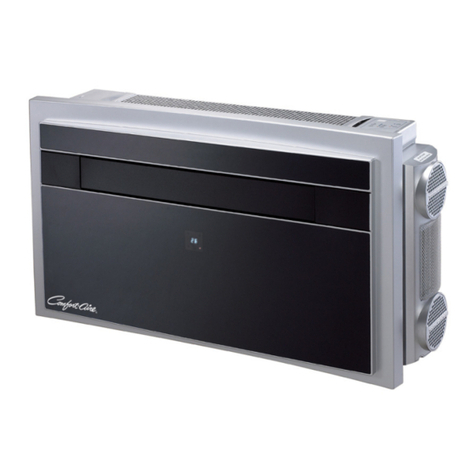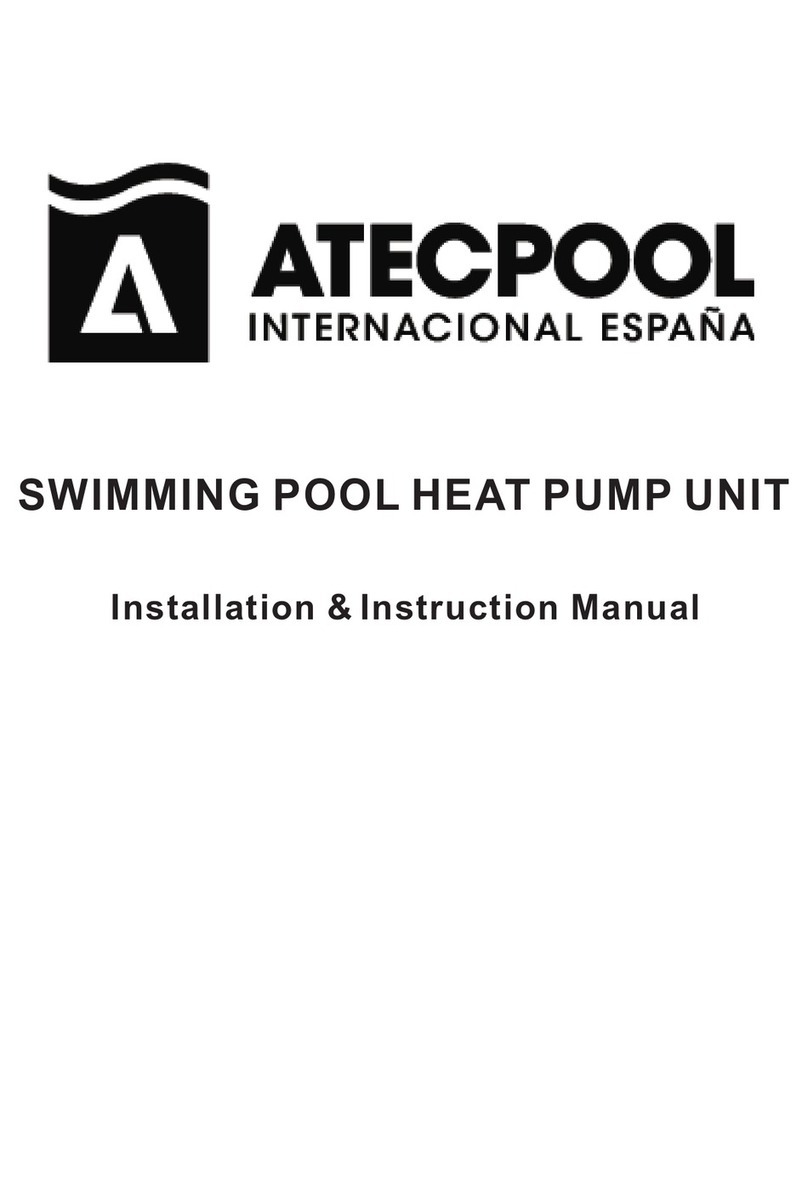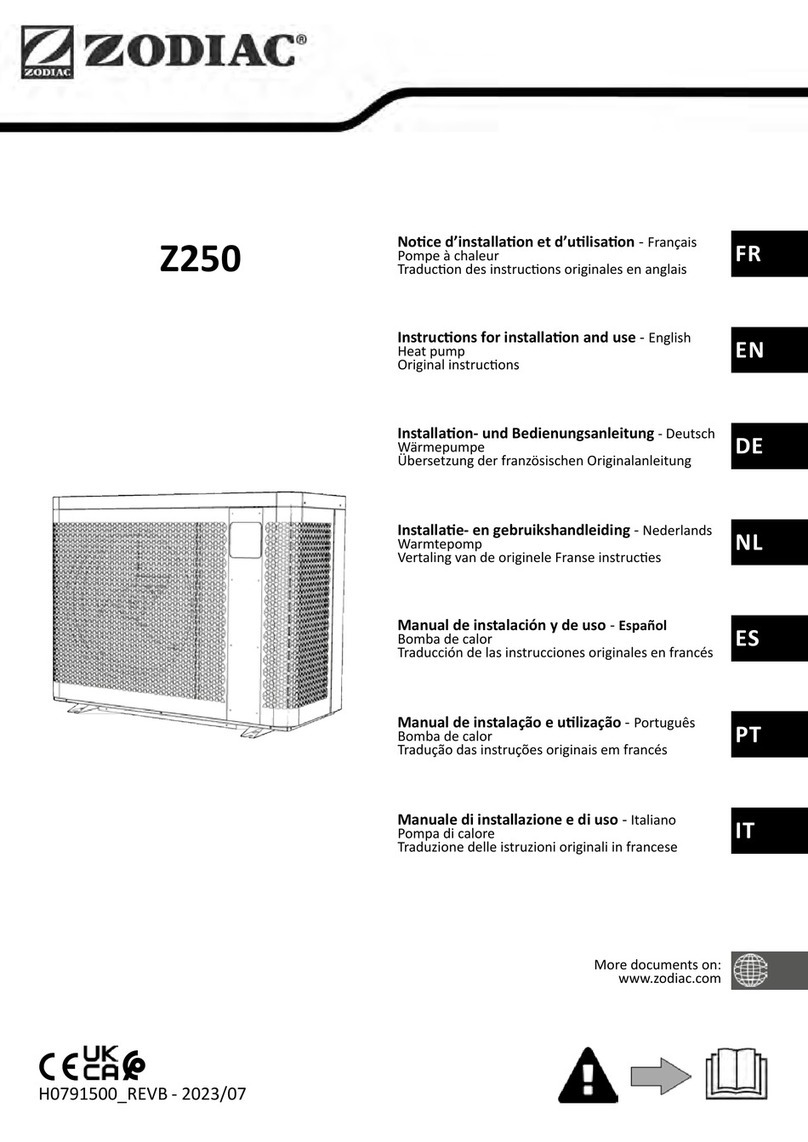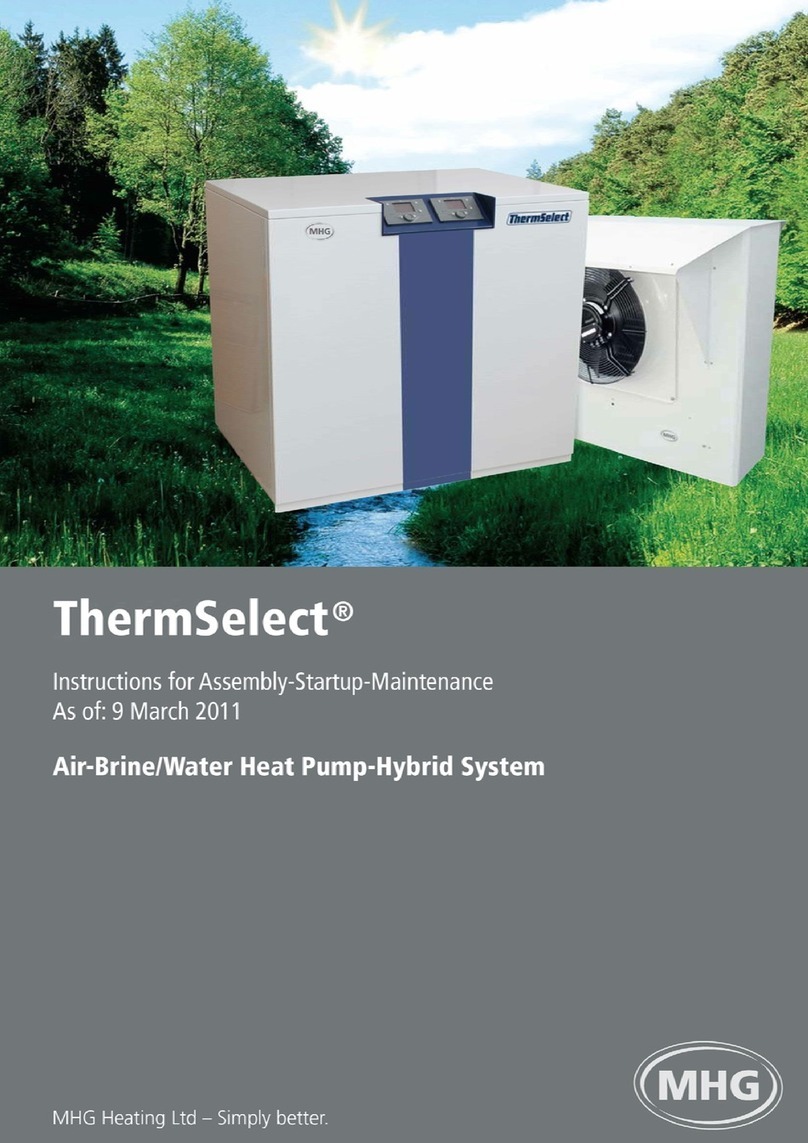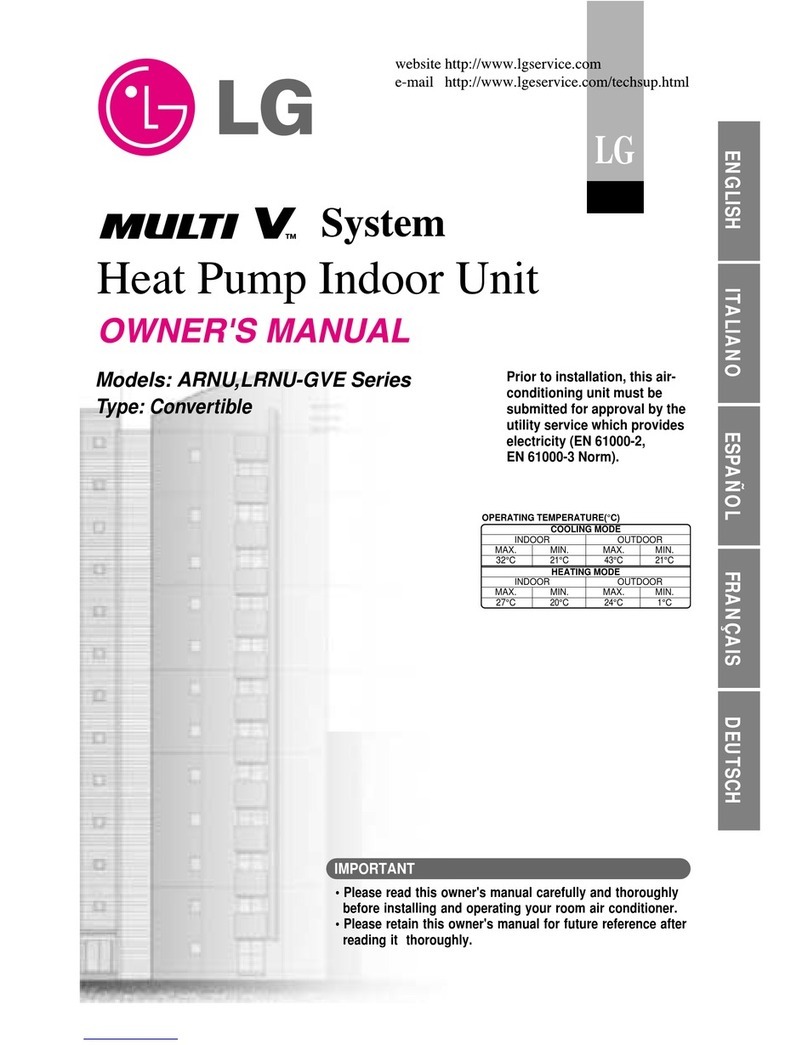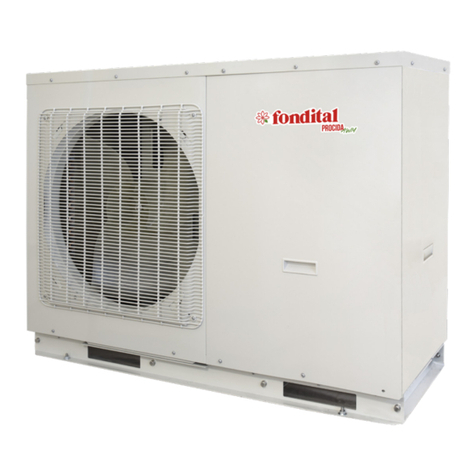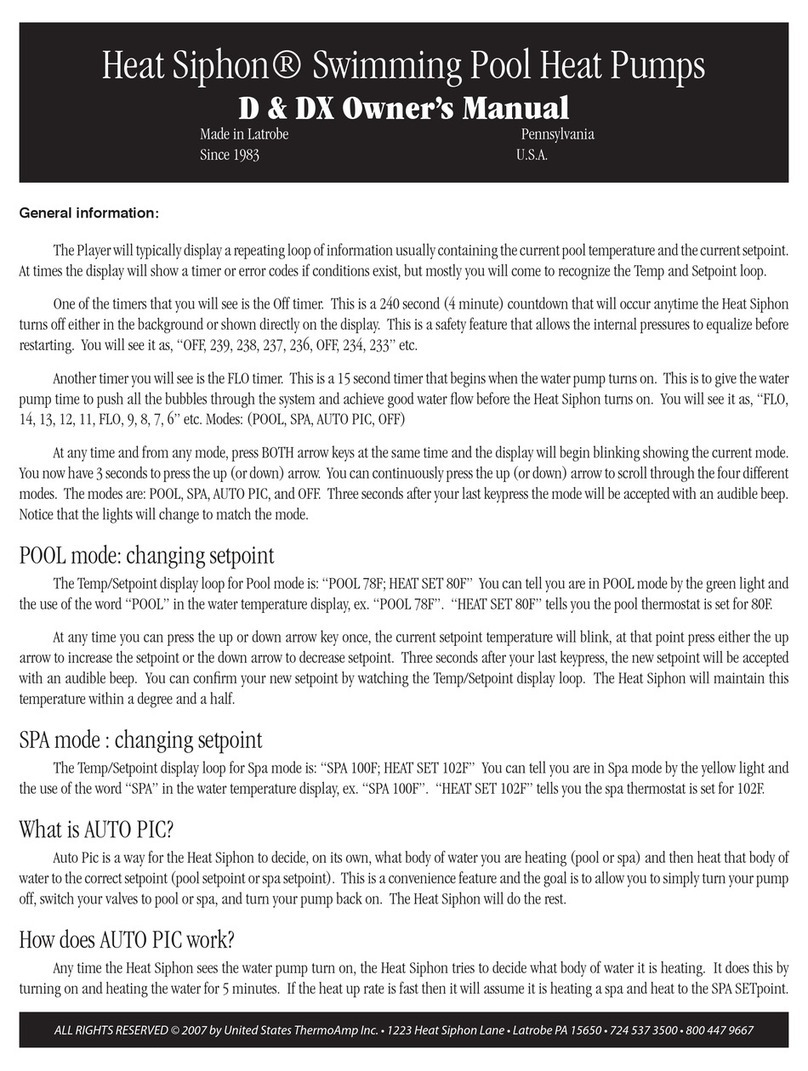
14 Unit operating principle
3. Unit operating principle
The air/water heat pump with DC inverter consists of an outdoor unit, an indoor unit and a storage tank with internal fan coil. Functions:
(1) Cooling;
(2) Heat;
(3) Hot Water;
(4) Cool + Hot Water;
(5) Heat + Hot Water;
(6) Emergen. mode;
(7) Fast Hot Water;
(8) Holiday mode;
(9) Force mode;
(10) Quiet mode;
(11) Disinfection;
(12) Weather depend;
(13) Floor preparation;
(14) Air removal;
(15) Auxiliary thermal unit.
Cool: in cooling mode, the refrigerant condensates inside the outdoor unit and evaporates in the indoor unit. Thanks to heat exchange
with indoor unit water, water releases heat and its temperature decreases, while refrigerant absorbs heat and evaporates. Outlet tem-
perature can be set based on user's needs, by means of a wired control. System low-temperature water is connected to internal fan
coil and underground tube through a valve control, so as to ensure heat exchange with indoor air and decrease ambient temperature
to the required value.
Heat: in heating mode, the refrigerant evaporates inside the outdoor unit and condensates in the indoor unit. Thanks to heat exchange
with indoor unit water, water absorbs heat and its temperature increases, while refrigerant releases heat and condensates. Outlet
temperature can be set based on user's needs, by means of a wired control. System high-temperature water is connected to internal
fan coil and underground tube through a valve control, so as to ensure heat exchange with indoor air and increase ambient temper-
ature to the required value.
Hot Water: in water heating mode, the refrigerant evaporates inside the outdoor unit and condensates in the indoor unit. Thanks to
heat exchange with indoor unit water, water absorbs heat and its temperature increases, while refrigerant releases heat and con-
densates. Outlet temperature can be set based on user's needs, by means of a wired control. System high-temperature water is
connected to internal storage tank coil through a valve control, so as to ensure heat exchange with storage tank water and increase
its temperature to the required value.
Cool + Hot Water: when the cooling mode is combined to the water heating mode, user can set priority of either mode as required.
In the preset conguration, the heat pump has top priority. In this conguration, if the cooling mode is used together with the water
heating mode, the heat pump will give priority to cooling. In this case, water can only be heated up using the storage tank electric
heater. In the opposite conguration, the heat pump will give priority to water heating and switch to cooling only as soon as water has
been heated up.
Heat + Hot Water: when the heating mode is combined to the water heating mode, user can set priority of either mode as required.
In the preset conguration, the heat pump has top priority. In this conguration, if the heating mode is used together with the water
heating mode, the heat pump will give priority to heating. In this case, water can only be heated up using the storage tank electric
heater. In the opposite conguration, the heat pump will give priority to water heating and switch to heating only as soon as water has
been heated up.
Emergen. mode: this mode is only available for room heating and water heating. When the outdoor unit stops due to a malfunction,
the corresponding emergency mode is activated. For heating mode, after the emergency mode is activated, heating can only be ob-
tained through the electric heater of the indoor unit. When the set outlet or indoor temperature is reached, the electric heater of the
indoor unit stops working. For water heating mode, the electric heater of the indoor unit stops while the electric heater of the storage
tank is working. Once the set air or storage tank temperature is reached, the electric heater stops.
Fast Hot Water: in fast water heating mode, the unit operates on the basis of the water heating command from the heat pump and
the electric heater of the storage tank also starts up simultaneously.
Holiday mode: this mode is only available for the heating function. It can be used to maintain the indoor ambient temperature or
water temperature in a certain range to prevent the unit hydraulic system from freezing or to protect certain objects from possible frost
damage. When the outdoor unit stops due to a malfunction, the two electric heaters of the unit are activated.
Force mode: this mode is only used for refrigerant recovery and troubleshooting of the unit.





















